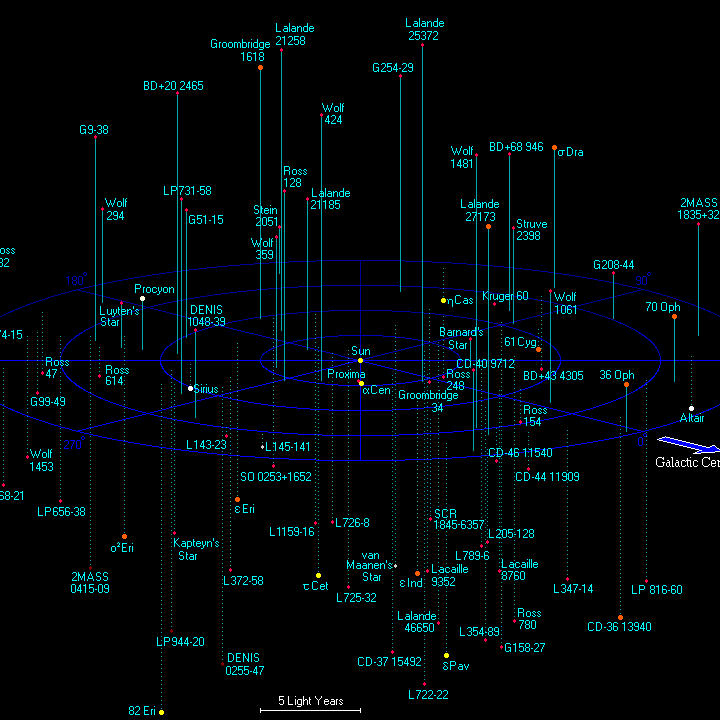In an exciting announcement on February 22, 2017, NASA revealed the discovery of seven exoplanets orbiting the star TRAPPIST-1. Among these planets, three are positioned at a distance from the star that could potentially support liquid water, an essential element for life as we know it. It is worth noting that this star system is located 40 light years away from Earth.
The news sparked a wave of excitement, leading some to speculate about the possibility of human colonization on these distant planets. However, it is important to note that 40 light years is an immense distance, equivalent to a staggering number of kilometers. In other words, it is an incredibly vast and monumental expanse!
From the physics course, we are familiar with the concept of the third space velocity, which refers to the speed required for a body on Earth’s surface to venture beyond the boundaries of our solar system. This velocity is measured at 16.65 km/sec. Conventional orbital spacecraft typically start their journeys at a speed of 7.9 km/sec, orbiting around the Earth. In theory, modern Earth technologies can achieve speeds of 16-20 km/sec, but no more!
Currently, humanity has not yet developed the capability to accelerate spaceships faster than 20 km/sec.
Now, let’s calculate the number of years it would take for a starship traveling at 20 km/sec to cover a distance of 40 light-years and reach the star TRAPPIST-1.
One light year is equivalent to the distance traveled by light in a vacuum in one year, which is approximately 300,000 kilometers per second.
A spaceship created by human beings travels at a velocity of 20 kilometers per second, which is 15000 times slower than the speed of light. In order to cover a distance of 40 light years, such a spaceship would require a time period of 600,000 years!
With the current level of technology, it would take an Earth spaceship approximately 600 thousand years to reach the star TRAPPIST-1! According to scientists, the existence of reasonable beings on Earth has only been estimated to be around 35-40 thousand years. And yet, the journey to TRAPPIST-1 would take 600,000 years!
In the near future, it will be impossible for humans to reach the TRAPPIST-1 star using technology. Even the most promising engines like ion, photon, and space sails, which are currently nonexistent on Earth, have been estimated to have the potential to accelerate a spacecraft to a speed of 10,000 km/sec. This would significantly reduce the travel time to the TRAPPIST-1 system to just 120 years. While this may seem like a somewhat acceptable timeframe for a suspended animation journey or for several generations of settlers, it is important to note that these engines are still purely speculative at this point.
Even the closest stars are still incredibly distant for humans, let alone stars within our own galaxy or other galaxies.
The size of our Milky Way galaxy is approximately 100,000 light years, which implies that it would take a modern Earth spaceship 1.5 billion years to travel from one end to the other! Scientific research indicates that our Earth is 4.5 billion years old, and multicellular life has been in existence for approximately 2 billion years. The distance to our closest galaxy, the Andromeda Nebula, is a staggering 2.5 million light-years away from Earth – an incredibly vast distance!
As it is evident, among all the individuals currently alive, none will ever have the opportunity to set foot on the surface of a planet in another star system.
Here’s a classic trick question. Pose the query to your companions, “What is the nearest planet to us?” and observe as they enumerate the nearest stars. Perhaps Sirius? Alpha something out yonder? Betelgeuse? The solution is clear; it is a colossal sphere of plasma around 150 million kilometers away from Earth. Let’s rephrase the question. Which star is closest to the Sun?
You may have heard that Alpha Centauri is the third brightest star in the sky, located only 4.37 light-years away. However, Alpha Centauri is not just a single star; it is actually a system of three stars. The first two stars form a binary star system with a common center of gravity and an orbital period of 80 years. Alpha Centauri A is slightly more massive and brighter than the Sun, while Alpha Centauri B is slightly less massive. In addition to these two stars, there is also a third component in the system known as Proxima Centauri, which is a faint red dwarf.
Proxima Centauri is not only part of the Alpha Centauri system but also happens to be the closest star to our Sun, located just 4.24 light-years away.
A binary star system. Alpha Centauri is situated in the Centaurus constellation, which is exclusively visible in the southern hemisphere. Regrettably, even if you are able to observe this system, Proxima Centauri will remain invisible. This celestial body emits such faint light that a considerably powerful telescope is required for its visibility.
Let’s ascertain the magnitude of the distance between us and Proxima Centauri. Contemplate. traveling at a velocity of nearly 60,000 kilometers per hour, which is the highest recorded speed. It took 9 years to traverse this distance in 2015. To reach Proxima Centauri at that pace, New Horizons will necessitate 78,000 light-years.
Proxima Centauri, which is located 32,000 light years away, currently holds the title of being the closest star. However, this will change in the next 33,000 years. In approximately 26,700 years, Proxima Centauri will make its closest approach to the Sun, bringing its distance from Earth down to just 3.11 light-years. After 33,000 years, the new closest star will be Ross 248.
What about the northern hemisphere?
For individuals residing in the northern hemisphere, the nearest visible star is Barnard’s Star, another red dwarf found in the constellation Ophiuchus. Unfortunately, like Proxima Centauri, Barnard’s Star is not bright enough to be seen with the naked eye.
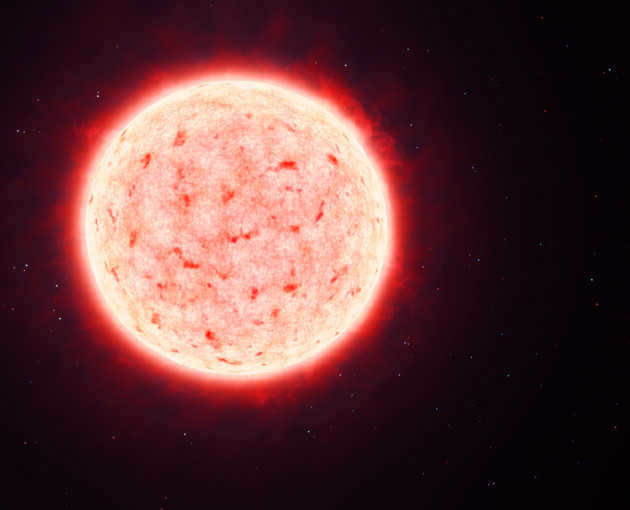
The closest star visible to the naked eye in the northern hemisphere is Sirius. Sirius is twice the size and mass of the Sun and is the brightest star in the sky. It is located 8.6 light-years away in the constellation Canis Major, also known as the Big Dog. Sirius is most famously associated with Orion, appearing in the winter night sky.
How do astronomers determine the distance to stars?
They use a method called parallax. Let’s conduct a small experiment. Extend one arm and place your finger near a distant object. Now, open and close each eye alternately. Notice how your finger appears to shift back and forth as you switch eyes. This phenomenon is known as the parallax method.
In order to determine the distance to the stars, one can measure the angle to a star in relation to a specific point, such as when the Earth is in a particular position in its orbit, such as during the summer. Then, six months later, when the Earth has moved to the opposite side of its orbit, another angle measurement can be taken in relation to a distant object. By measuring these angles, it is possible to calculate the distance to the star, if it is relatively close to us.
This method can be used to measure the distance to the nearest stars, although it is only effective for distances up to 100,000 light-years away.
Below is a compilation of the 20 star systems that are closest to us, along with their respective distances in light years. Some of these systems may have multiple stars, but they are considered part of the same system.
| Stellar Object | Light Years Away |
| Alpha Centauri (Alpha Centauri) | 4.2 |
| Barnard’s Star | 5.9 |
| Wolf 359 (Wolf 359; CN Leo) | 7.8 |
| Lalande 21185. | 8.3 |
| Sirius | 8.6 |
| Luyten 726-8. | 8.7 |
| Ross 154 | 9.7 |
| Ross 248 | 10.3 |
| Epsilon Eridani. | 10.5 |
| Lacaille 9352. | 10.7 |
| Ross 128 | 10.9 |
| EZ Aquarii. | 11.3 |
| Procyon | 11.4 |
| 61 Cygni | 11.4 |
| Struve 2398 | 11.5 |
| Groombridge 34. | 11.6 |
| Epsilon Indi. | 11.8 |
| DX Cancri. | 11.8 |
| Tau Ceti | 11.9 |
| GJ 106 | 11.9 |
According to NASA’s findings, there are currently 45 stars located within a distance of 17 light years from the Sun. In the grand scheme of things, this number pales in comparison to the estimated 200 billion stars that exist in our universe. However, it’s important to note that some of these stars are incredibly faint, making them extremely challenging to detect. With advancements in technology, it is possible that scientists may eventually discover stars that are even closer to our own solar system.
The article you just read, titled “The closest star to the Sun”, sheds light on this fascinating topic.
The concept of a light-year is familiar to many due to its frequent appearance in science fiction. Despite its name, which bears a resemblance to the time measurement of a year, the light-year is actually a unit of distance rather than time. It is specifically used to quantify the vast distances within our universe.
A light-year is a non-standard unit of length that represents the distance covered by light in a vacuum over the course of one year (equivalent to 365.25 days or 31,557,600 seconds).
The usage of the light year in comparison to the calendar year commenced after the year 1984. Prior to that, the light year represented the distance that light would travel within a single tropical year.
The duration of the tropical year does not possess an exact value, as its calculations are dependent on the angular velocity of the Sun, which is subject to variations. For the light year, an average value was adopted.
The disparity in calculations between the tropical light year and the light year associated with the Julian calendar is 0.02 percent. However, since this unit is not utilized for highly precise measurements, there is no practical distinction between the two.
The concept of the light year is commonly mentioned in popular scientific literature. However, in the field of astronomy, another unit called the parsec is used to measure vast distances. The parsec is calculated based on the average radius of the Earth’s orbit around the Sun. It is worth noting that 1 parsec is equivalent to 3.2616 light-years.
Calculations and measurements
The computation of a light-year is directly tied to the speed of light. In physics calculations, it is typically considered to be 300,000,000,000 m/s. The precise value of the speed of light is 299,792,458 m/s. In other words, 299,792,458 meters is equivalent to only one light second!
The distance to the moon is approximately 384,400,000 meters, so a beam of light will reach the surface of the moon in about 1.28 seconds.
The distance from the Sun to the Earth is 149,600,000,000,000 meters. Therefore, it takes slightly less than 7 minutes for the Sun’s light to reach the Earth.
Thus, there are 31,557,600 seconds in a year. By multiplying this number by the distance equivalent to one light second, we find that one light-year is equal to 9,460,730,472,580,800 meters.
9,460,730,472,580,800,000,000 meters is the equivalent of 1 million light-years.
Astronomers estimate that the diameter of our Galaxy is approximately 100,000 light years. This means that distances measured in millions of light years are not applicable within our Galaxy, as they are more relevant for measuring distances between galaxies.
The farthest cosmic distance from Earth that can currently be measured is the distance to the edge of the observable Universe, which is approximately 45 billion light-years.
The term “light-year” is commonly used in scientific articles, television programs, textbooks, and science news stories. However, some individuals mistakenly believe that a light-year is a unit of time measurement, when in reality it is used to measure distance.
What is the distance covered in a year?
In order to grasp the significance of the term “light year,” one must first recall the fundamentals of physics, particularly the section that deals with the speed of light. The speed of light in a vacuum, unaffected by factors such as gravity, magnetic fields, suspended particles, or refraction through a transparent medium, is 299,792.5 kilometers per second. It is important to note that in this context, “light” refers to visible light as perceived by human vision.
There are also lesser-known units of distance measurement such as the light-month, light-week, light-day, light-hour, light-minute, and light-second.
For a considerable period of time, light was deemed to be an inexhaustible entity, and it was not until the 17th century that the astronomer Olaf Remer made the first estimation of the speed of light rays in a vacuum. Although his calculations were only approximate, the significance lies in the discovery of a finite value for the speed. It was not until 1970 that the speed of light was accurately measured at one meter per second. Subsequent attempts to achieve even greater precision have been hindered by the inherent limitations of the meter standard.
Light-year and other measurements of distance
Due to the immense scale of distances in space, it is impractical to use familiar units of measurement. As a result, a special unit known as a light-year was introduced. A light-year is defined as the distance that light can travel in one Julian year, which is equivalent to 365.25 days. By calculating the number of seconds in a day (86,400), we can determine that light can travel a distance of slightly more than 9.4 kilometers in one year. While this may seem like a large distance, it is important to consider the vastness of the universe. For instance, the nearest star to Earth, Proxima Centauri, is located approximately 4.2 light-years away. Furthermore, the diameter of the Milky Way galaxy is over 100,000 light-years. This means that the visual observations we can make today actually depict events that occurred approximately 100,000 years ago.
In the field of professional astrophysics, the utilization of the concept of a light year is infrequent. Scientists primarily work with measurements such as parsecs and astronomical units. A parsec is determined as the distance to an imaginary point at which the radius of the Earth’s orbit is observed at an angle of one arc second (1/3600 of a degree). The average radius of orbit, which is the distance from the Earth to the Sun, is termed an astronomical unit. A parsec is equivalent to approximately three light years or 30.8 trillion kilometers. An astronomical unit is roughly equal to 149.6 million kilometers.
Meters, kilometers, miles, and other units of measurement have been and continue to be effectively employed on Earth. However, space exploration has presented the issue of introducing new length measurements, as even within the solar system, it is possible to become perplexed by the vast number of zeros involved in measuring distances in kilometers.
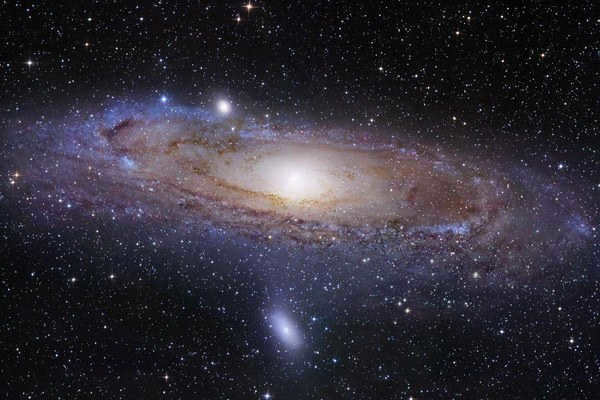
In order to determine distances within our Solar System, scientists created a unit of measurement known as an astronomical unit. This measurement is equal to the average distance between the Earth and the Sun. However, even for our own Solar System, this unit of measurement may not be entirely appropriate. To provide an illustrative example, imagine that the center of a small table represents the Sun, and the astronomical unit is equivalent to 1 cm. In order to mark the outer boundary of the Solar System, known as the Oort cloud, we would need to move 0.5 km away from the table.
If the astronomical unit is not sufficient for measuring distances within our Solar System, it becomes even more necessary to develop other units of measurement for distances between stars and galaxies.
The measurement of distance on the cosmic scale is based on the concept of the light-year
In order to establish an absolute value for measuring distance in the vastness of the Universe, scientists turned to the speed of light. In 1975, the most precise measurement was made, determining the speed of light to be 299,792,458 m/s or 1,079,252,848.8 km/h.
As a unit of measurement, the light-year was defined as the distance that light travels in one Earth non-leap year, which is 365 Earth days.
In modern times, the term light-year is more commonly found in popular science books and fantasy novels rather than scientific publications. Astronomers have shifted towards using a larger unit of measurement known as the parsec.
Parsec and its variations
The term “parsec” is derived from the phrase “parallax of an angular second.” An angular second is a unit of measurement for angles: a full circle is divided into 360 degrees, each degree is divided into 60 minutes, and each minute is further divided into 60 seconds. Parallax refers to the change in the observed position of an object based on the observer’s location. The annual parallax of stars is utilized to determine their distance from us. If we envision a right triangle, with one of the catheti representing the semi-major axis of Earth’s orbit and the hypotenuse representing the distance between the Sun and another star, the angle within the triangle would correspond to the annual parallax of that particular star.
At a specific distance, the annual parallax will be equal to 1 angular second, and this distance has been designated as a unit of measurement known as a parsec. The international symbol for this unit is rs, while the Russian symbol is pk.
A parsec is equivalent to 30.8568 trillion kilometers or 3.2616 light-years. However, for astronomical distances, this was insufficient. Astronomers utilize derived units: 1,000 parsecs, 1 million parsecs, and 1 billion parsecs.
When you hear the statement “Tatooine is 20 light-years away,” I’m sure many people have legitimate questions. Allow me to address some of them:
So, what exactly is a light-year?
How long would it take a spaceship to travel a light-year from Earth?
Today’s article is dedicated to explaining the significance of this particular unit of measurement, in comparison to the more familiar kilometers, and showcasing the immense scale of the Universe.
Let’s envision a person who, in defiance of all regulations, is speeding down the highway at a staggering rate of 250 km/h. In just two hours, they will have traveled a distance of 500 kilometers, and in four hours, an impressive 1000 kilometers. Unless, of course, they encounter an accident along the way…
At first glance, this may appear to be quite the rapid pace! However, if our daring racer were to attempt to circumnavigate the Earth (which is approximately 40,000 km in circumference), they would require a significantly greater amount of time. Specifically, 40 times more, resulting in a total of 160 hours. That equates to nearly an entire week of non-stop riding!
In the end, though, we seldom express this total distance as 40,000,000 meters. Our inclination towards convenience has always led us to devise and utilize alternative units of measurement that are more concise.
It takes an average of 1.25 seconds for light to travel from Earth to the moon. and just over eight minutes to reach the Sun.
Isn’t that incredible? Despite this, there is still no evidence of speeds faster than the speed of light. Therefore, the scientific community has decided to measure cosmic distances using units based on the time it takes for radio waves (which includes light) to travel.
A light-year is the distance that a beam of light travels in one year. On interstellar scales, it doesn’t make much sense to use smaller distance units. However, there are a few smaller units available. Here are their approximate values:
1 light second ≈ 300,000 kilometers;
1 light minute ≈ 18,000,000 km;
1 light hour is approximately equal to 1,080,000,000,000 kilometers;
1 light day is approximately equal to 26,000,000,000,000 km;
1 light week is approximately equal to 181,000,000,000,000 km;
1 light month is approximately equal to 790,000,000,000,000 km.
Now, in order for you to grasp the magnitude of these numbers, let’s calculate the distance that corresponds to one light year.
There are 365 days in a year, 24 hours in a day, 60 minutes in an hour, and 60 seconds in a minute. Therefore, a year consists of 365 x 24 x 60 x 60 x 60 = 31,536,000 seconds. In one second, light travels 300,000 kilometers. Hence, in one year, its beam will cover a distance of 31,536,000 x 300,000 = 9,460,800,000,000,000 kilometers.
This number can be expressed as NINE TRILLION, FOUR HUNDRED SIXTY SIX BILLION, EIGHT HUNDRED MILLION kilometers.
Undoubtedly, the precise value of the light-year differs slightly from our calculations. However, when explaining distances to stars in popular science articles, utmost accuracy is not necessary, and a difference of a hundred or two million kilometers will not have a significant impact.
Now, let’s proceed with our thought experiments…
Let’s imagine a modern spacecraft departing the solar system at a speed of 16.7 kilometers per second, which is the third space velocity. It will take the spacecraft approximately 18,000 years to cover the first light-year!
It will take around 78,000 years for the spacecraft to reach our nearest star system, Alpha Centauri, which is located 4.36 light-years away. (refer to the image at the beginning)
Our Milky Way galaxy spans approximately 100,000 light-years. In a span of 1.78 billion years, it will traverse this vast distance.
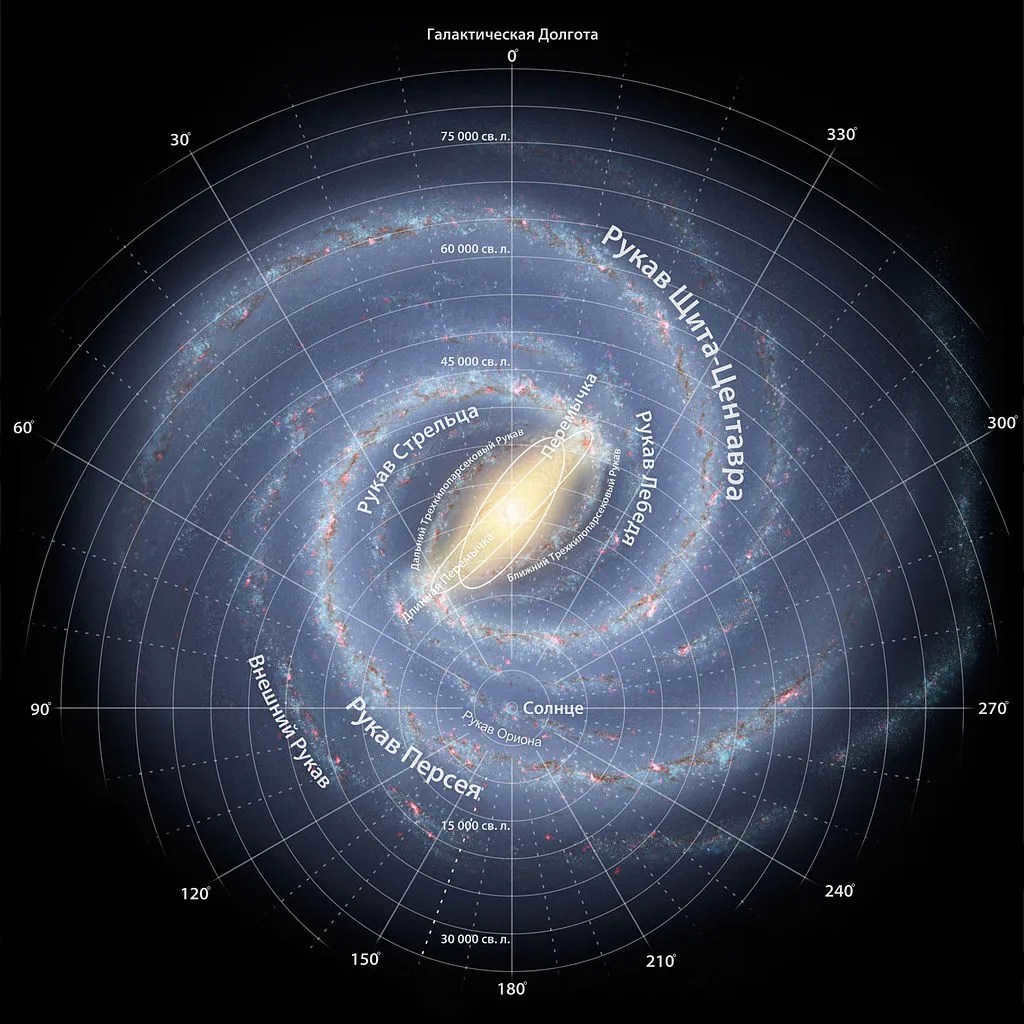
The notion of a light-year is also intimately connected with the principles of relativistic physics, which established the inseparable link between space and time in the early 20th century, when the fundamental assumptions of Newtonian mechanics were being challenged. Before that, distances were measured in larger units within the system.

The formation of measuring units has been a simple process throughout history. Each subsequent unit was a combination of smaller units (centimeters, meters, kilometers, etc.). However, the concept of the light year introduced a new perspective, as it was tied to time. According to modern science, the speed of light in a vacuum is constant and is considered the maximum speed allowed in relativistic physics. These principles served as the foundation for the light year measurement. A light year represents the distance that a ray of light travels in one Earth calendar year. In terms of kilometers, it is approximately 9.46*10^15 kilometers. Interestingly, a photon can cover the distance to the nearest Moon in just 1.3 seconds and reach the Sun in about eight minutes. However, it would take approximately four light-years for a photon to reach the next closest star, Alpha.

Wow, what an incredible distance! Astrophysics takes it even further with a larger unit of measurement for space. A light-year is approximately one-third of a parsec, which is an even more significant measure for interstellar distances.
Exploring the various conditions that affect the speed of light propagation.
By the way, it’s worth mentioning that photons can travel at different velocities in various mediums. We already have an understanding of how quickly they move through a vacuum. When we refer to a light year as the distance light travels in a year, we are specifically referring to empty space. However, it’s intriguing to consider that in different conditions, the speed of light may be somewhat slower. For instance, in the atmosphere, photons tend to scatter at a slightly reduced velocity compared to a vacuum. The exact speed depends on the specific state of the atmosphere. Consequently, in an environment filled with gas, the value of a light year would be slightly lower. Nevertheless, this deviation would not be significantly different from the universally accepted value.
Unbelievable but true: Mind-boggling facts about the universe

Seeking ways to visually comprehend the precise magnitude of the Universe – an endeavor known to be futile, and dare I say – frankly foolish. However, the vast expanse of darkness that envelops us does not render efforts to comprehend the cosmos redundant. Indeed, they are imperative!
Gaining a sense of the dimensions of the Universe, even if only rough and approximate, proves valuable even to the layman, not just astrophysicists or astronomers. After all, everything is understood through comparison, and it serves, firstly, as a means for personal growth, and secondly – purely fascinating. Who would have imagined that such marvels can transpire in our world!
Alright, it’s time to dive into 12 mind-blowing facts about the vastness of the Universe.
1. A single light-year measures a staggering 9.5 trillion kilometers.

Measurements on our planet are closely connected to the physical distances between two objects. For instance, if a city is situated one kilometer away from an observer, it will be 1,000 meters away. However, in the vastness of outer space, distances are so immense that units of measurement must consider the element of time. The most frequently used unit is the light-year, which represents the distance that light, the fastest known entity in the universe, travels in the span of one year.
This distance is roughly equivalent to 10 trillion kilometers. The star nearest to Earth, Alpha Centauri, is located at a distance of 4.4 light-years. In other words, it is approximately 44 trillion kilometers away.
2. The Earth’s volume is 1300 times smaller than the volume of Jupiter
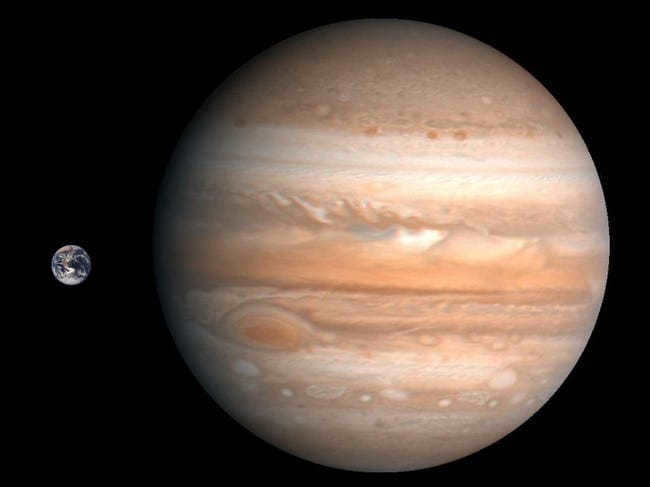
photo: NASA/Wikimedia Commons
However, one doesn’t need to travel very far to comprehend the insignificance of Earth. Jupiter, the largest planet in our solar system, possesses a volume that is 1,300 times greater than that of our planet. Additionally, Jupiter is home to a storm called the Great Red Spot, which is 2-3 times the size of Earth!
Nevertheless, Jupiter pales in comparison to the Sun, which is over 1,000,000 times larger than Earth and accounts for 99.8 to 99.9% of the mass of our entire solar system. Each morning, when the sun rises, consider the immense scale of this celestial object, which, in comparison to other known stars, is rather ordinary….

In a location with very little light pollution, the night sky can be a breathtaking sight, filled with countless stars. On a clear night, an observer may be able to see up to 3,000 stars and other celestial objects from a single vantage point, under ideal conditions.
Considering the significant influence the night sky has had on human culture, it is somewhat disappointing that the naked eye can only perceive fewer than 10,000 stars from Earth, even when traveling to different parts of the planet.
A conservative estimate suggests that there are approximately 100 billion stars in the entire Milky Way galaxy, possibly even as many as 400 billion. This means that there are roughly 399,999,980,000 stars that remain hidden from our view on Earth.
4. The Sun can accommodate over 1 million Earths
Visual representation demonstrates the capacity of the Sun to fit more than 1 million Earths inside it pic.twitter.com/Eq3qpl7Log
– Mike Whitmore (@mikewhitmore) January 29, 2015
If you believe that the Sun is not an enormous star, consider this fact: it has the ability to accommodate over 1 million planets similar to Earth. Just take a moment to contemplate that – over 1 million! However, when the Sun ascends in the sky, it doesn’t appear as colossal. This is due to the Sun being situated at a significant distance from us – specifically, between 147 and 152 million kilometers.
5. There are 285 galaxies per capita on our planet

photo: NASA/ESA/Hubble Heritage Team/nasa.gov
When we divide the total number of known galaxies by the current population of Earth, we find that there are approximately 285 galaxies for each individual.
Given the immense scale of these numbers, it is simply not feasible to manually count every galaxy, let alone provide an accurate estimate. Until late 2016, astronomers believed that there were roughly 100-200 billion galaxies in the universe. However, it turns out that their estimation was off by a factor of ten.
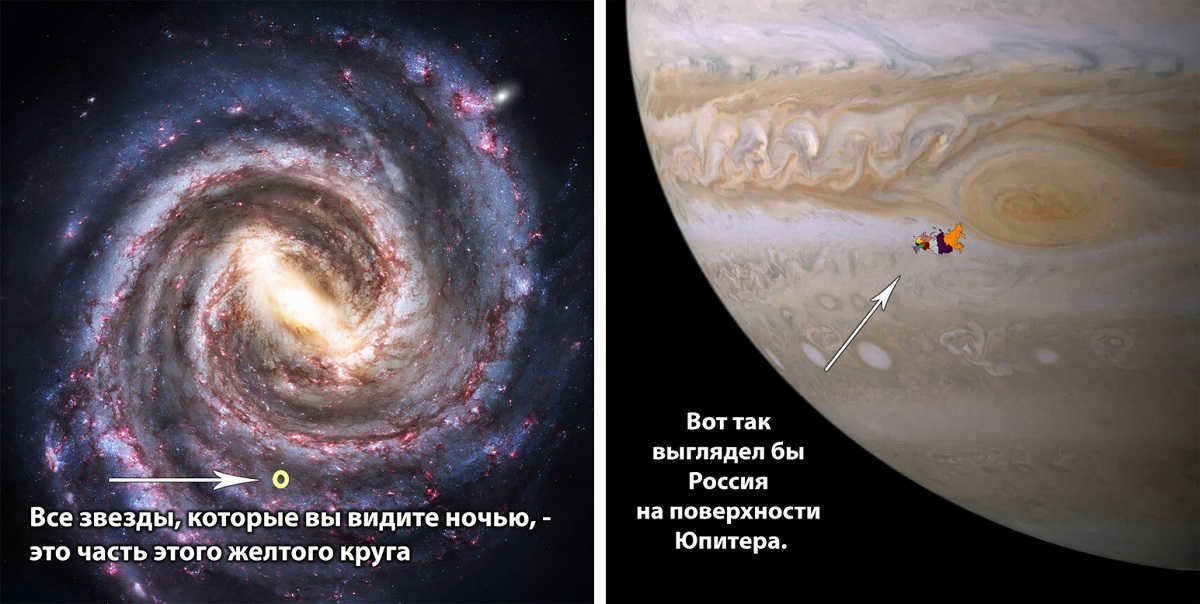
Recent studies indicate that there are approximately 2 trillion galaxies in the universe, which equates to approximately 285 galaxies for each individual on our planet. Nevertheless, it is highly plausible that future generations of scientists, in the next 20-30 years, will find this estimate to be grossly underestimated.

When observing the night sky, one can observe a dark backdrop speckled with shining dots. The imagery captured by the Hubble Ultra Deep Field project may appear astonishingly comparable. The sole distinction lies in the fact that the dots in the night sky represent individual stars, whereas the dots in the Hubble telescope photographs depict galaxies, each of which has the potential to house up to 100 billion stars.
7. When the Milky Way and the Andromeda galaxy merge, there will be no star-to-star collisions

In approximately 4.5 billion years, the Andromeda and Milky Way galaxies are expected to collide. It is important to note that despite this collision, none of the stars within these galaxies will actually collide with one another. The reason for this is the immense amount of empty space within galaxies, making the chances of a physical collision extremely unlikely. This collision serves as a reminder of just how vast and expansive space truly is, even within a galaxy that is filled with stars and planets!
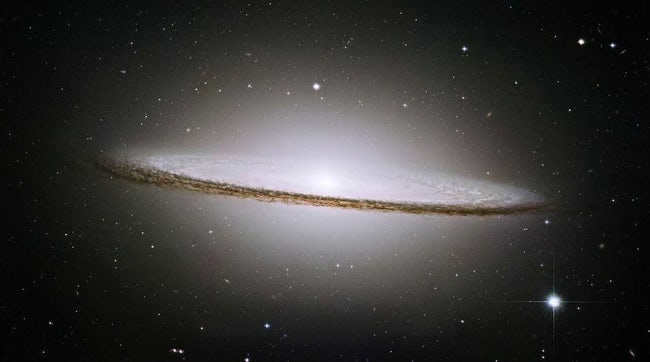
photo: WikiImages / pixabay.com
While there may be a few smaller galaxies closer to the Milky Way than Andromeda, Andromeda itself is the largest collection of stars in the Local Group and is situated 2.5 million light-years away. Furthermore, it holds the distinction of being the nearest among the biggest galaxies.

In the event that the initial individual with advanced intellect were to be placed on a spacecraft journeying at the velocity of light towards Andromeda, it would have completed less than 20% of the entire distance by this juncture. The human race itself may cease to exist well before this fictional persona arrives at the frontiers of an unfamiliar galaxy.
9. It takes decades for even the fastest fictional spaceships to traverse the expanse of the universe

photo: stevebidmead / pixabay.com
The vastness of the universe is beyond human comprehension. In order to depict this vastness, science fiction often portrays characters traveling at speeds faster than light, enabling them to traverse between galaxies. Without this ability, space travel would be limited to only a few planets.
However, even the spaceships depicted in science fiction are not fast enough. Even the fastest of these vessels, capable of traveling at speeds exceeding 1.3 billion times the speed of light, would still require a significant amount of time to reach Andromeda. To traverse the entire universe, which spans 93 billion light years, it would take several decades.
10. The diameter of the observed Universe is estimated to be 93 billion light years.

Correct, that is the magnitude of the cosmos. However, this only represents what we are able to observe using the most advanced technology. In reality, the true scale of the Universe remains beyond our grasp.
Nevertheless, if we consider the known expanse of the universe and imagine a scenario where a person could travel at the speed of one light-year per second, it would still take them roughly 3,000 years to traverse from one end of the universe to the other.
11. The number of stars in the Universe surpasses the quantity of sand grains on Earth

photo: mcbeaner / pixabay.com
Even on our planet, there exist substances that surpass human understanding. It is already difficult to fathom (and even more challenging to comprehend the calculations of scientists) that there are roughly 7.5 quintillion grains of sand (that’s 7.5 with 18 zeros). However, the number of visible stars is even greater, a significant amount more!
In the explored portion of the Universe alone, there are approximately five to ten times as many, and this does not include the planets and their moons.
12- If you were to contact someone on Venus, it would require a 30-minute delay between each response

photo: WikiImages / pixabay.com
Venus, the planet closest to Earth, may not be as close as one might think. It is situated at a distance of approximately 38 million to 260 million kilometers from Earth. This vast expanse results in a considerable time delay of 2 to 15 minutes for light to travel from Earth to Venus. Consequently, if one were to engage in a phone conversation with an imaginary individual residing on Venus, there could be a delay of up to 30 minutes between responses due to the travel time of the communication signal, which moves at the speed of light.
13. The farthest distance a human has been from Earth is 1.3 light seconds

Photo: NASA/GSFC/Arizona State University
This, of course, pertains to the mission of sending a human being to the moon. The time it takes for light to travel from the surface of the earth to our natural satellite is approximately 1.3 seconds. At first glance, this may seem like a fleeting moment. However, the pursuit of this extraordinary endeavor has consumed mankind for centuries.

Each time you gaze upwards at the sky, you behold the cosmos as it existed in bygone eras, and the more distant the objects are, the further back in time we peer.
When we observe an entity located 50 million light years away, we are able to witness its appearance precisely 50 million years ago, since that is the length of time it took for the light to traverse from the object to our retinas.
15. Lastly, let’s consider some theories

photo: ESA/Hubble and NASA / nasa.gov
A group of scientists have made an intriguing discovery in the vast expanse of space – a void measuring one and a half billion kilometers across that could potentially be a parallel universe.
This particular void is completely devoid of any matter, including dark matter, and it is a staggering 40 times larger than any previously observed void. However, due to its relatively small size in comparison to the vastness of space, even the most advanced telescopes struggle to detect it.
Despite its elusiveness, this discovery opens up exciting possibilities and raises many questions about the nature of our universe and the existence of other parallel realities.
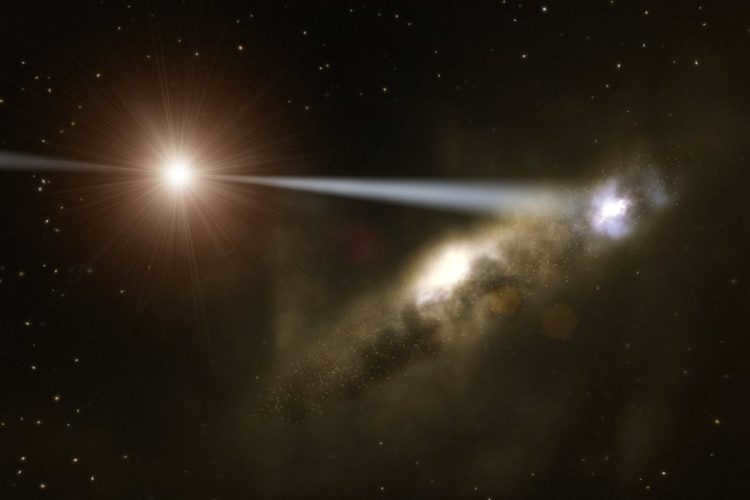
- The history of astronomy
A light-year is defined as the distance traveled by light in one year. The International Astronomical Union has provided a definition for the light-year – it is the distance that light travels in a vacuum, unaffected by gravity, over the course of a Julian year, which is equivalent to 365 days. This is the accepted definition used in scientific literature.
When it comes to professional literature, distances are often measured in parsecs or kilo- and megaparsecs.
There are specific values assigned to distances in terms of light hours, minutes, and days, among others.
- A light year is equal to 9,460,800,000,000,000 kilometers,
- A month – 788,333 million kilometers
- A week – 197,083 million kilometers,
- A day – 26,277 million km,
- One hour is equivalent to a distance of about 1,094 million kilometers.
- One minute corresponds to approximately 18 million kilometers.
- One second is approximately equal to 300,000 kilometers.
That’s fascinating! It takes about 1.25 seconds for light to travel from the Earth to the Moon, while it takes a little over 8 minutes for light to reach the Sun.
An intriguing fact about the nature of the cosmos
The celestial body known as Betelgeuse, situated in the Orion constellation, is on the verge of a tremendous explosion that is predicted to occur in the foreseeable future (specifically, within a few centuries).
Betelgeuse is positioned at a distance of 495 to 640 light years away from us.
If this explosion were to occur at this very moment, it would not become visible to the inhabitants of Earth until approximately 500-600 years from now.
Furthermore, in the event that you were to witness this explosion today, it is important to note that the actual occurrence transpired during the time of Ivan the Terrible…
Earth year
An Earth year corresponds to the distance covered by our planet in a period of 365 days. When considering all the necessary calculations, it can be determined that one light year is equivalent to 63242 Earth years. However, it is important to note that this value is specific to Earth and may vary significantly for other celestial bodies such as Mars or Jupiter. A light year, on the other hand, represents the distance between two celestial objects. Despite both measurements referring to distance, the values for light years and Earth years differ greatly.
Scale
- If a modern spacecraft departs from the solar system at a speed of 16.7 kilometers per second, it will cover the first light-year in 18,000 years!
- It will take about 78,000 years for the spacecraft to reach Alpha Centauri, which is 4.36 light-years away.
- For the spacecraft to cross our Milky Way galaxy, which spans approximately 100,000 light years, it will require 1 billion, 780 million years.
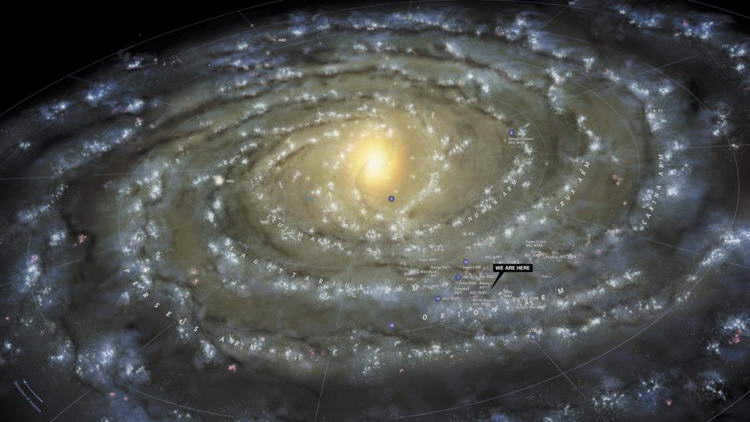
Our galaxy, the Milky Way.
Calculating the immense expanse of space in kilometers or miles is a daunting task. Scientists are contemplating the search for alternative units of measurement for vast distances. Enthusiasts of science fiction films and literature are frequently acquainted with the concept of a light-year. However, not everyone can articulate its significance and distinction from the familiar earthly measurements.

The light-year is a well-known unit of measurement for cosmic distances. It is commonly used to determine the vast distances between celestial objects.
One crucial requirement for calculating the light-year is that it must be done in a vacuum, free from the influence of any gravitational fields. In this vacuum, the speed of electromagnetic waves, including light, remains constant.
When was the speed of light determined?
In the 17th century, scientists embarked on a quest to determine the speed of light. Astronomers had previously assumed that light rays traveled instantaneously through space, but Galileo Galilei challenged this notion. He set out to calculate the time it took for a beam of light to travel a distance of eight kilometers. Unfortunately, his experiments did not yield successful results. Another scientist, O. Rømer, also attempted to determine the speed of light but faced similar difficulties. He observed a temporal discrepancy in the eclipses of other planets’ satellites, which varied depending on the Earth’s position. When the Earth was farther from the celestial object, it took longer for the light rays to reach its surface. However, Rømer was unable to calculate the exact speed of light.
James Bradley, an English astronomer, was the first to make an approximate calculation of the speed of light in the 18th century. He determined its value to be 301,000 km/s. Later, in the 20th century, scientists utilized Maxwell’s theory of electromagnetism to accurately calculate the velocity of light. This groundbreaking research incorporated cutting-edge laser technologies and took into consideration the refraction coefficients of the lasers. The calculated speed of light was found to be 299,792 kilometers and 458 meters per second. This significant discovery led to the establishment of a convenient unit of measurement for outer space.
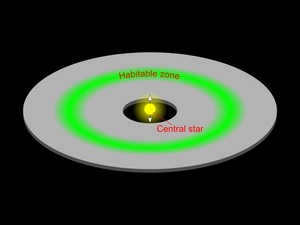
What is the equivalent of 1 light-year in kilometers
To make the calculation, we took 365 days as the reference. If we convert the daily value to seconds, we get 86,400 seconds. And if we multiply that by the total number of days, which is 31,557,600, we get the distance traveled by a ray of light.
By multiplying the distance traveled in one second by 31,557,600, we get a result of just over 9.4 trillion kilometers. That’s how far light would travel in one year. This is the distance a light beam would cover in 365 days, without any gravitational fields affecting its path, while traveling along the Earth’s orbit.
Here are some examples of distances calculated using this method:
- A ray of light can travel from the earth to the moon in 1 minute and 3 seconds;
- By using this method, we can determine the diameter of our galactic disk in 100,000 years;
- The distance from the Sun to Pluto, measured in light hours, is 5.25 hours;
- It would take 2,500,000 light-years to reach the Andromeda Galaxy from Earth, while the star Proxima Centauri would only take 4 years;
- It takes approximately 8.20 minutes for sunlight to reach our planet;
- The Center of our Galaxy is located 26,000 light years away from the Sun;
- The Virgo cluster is situated 58,000,000 light years away from our planet;
- Clusters of galaxies can have diameters measured in tens of millions of years using this method;
- The distance from Earth to the outermost visible edge of the Universe has been measured to be 45 billion light years.

Why is it so significant?
The calculated velocity of light has allowed astronomers to determine the distances between planets, stars, and galaxies. It has become apparent that the light emitted by a star does not reach Earth instantaneously. By observing celestial objects in the night sky, we are actually observing the past. The explosion of a distant planet hundreds of years ago would only be observed by scientists today.
Calculations in this unit of measurement are convenient within our universe. Less commonly used are hours, weeks, or months. When determining the distance to distant space objects, the resulting value will be immense. Using such values in mathematical calculations becomes challenging and impractical. Scientists have considered this and use another unit of measurement – parsec – for astronomical calculations involving large distances. It is more suitable for complex mathematical calculations. A parsec is equal to three light-years.
Distance is often measured in our lives: from work to the nearest store, from one city to another. We compare different quantities to understand the difference. Many people find the concepts of light years and Earth years to be similar, if not the same. There is a desire to compare them. However, we must first determine what we mean by a terrestrial year. It can be defined as the distance traveled by our planet in 365 days. With these parameters, one light year would be equal to 63,000 Earth years.
If we calculate the Earth year in days, it becomes a unit of time. On the other hand, the light year represents a distance. Therefore, comparing these values is meaningless. In this case, there is no answer to the question.
Video
Watch this video to gain a better understanding of the concept of a light year.
If you enjoy our content, please give it a thumbs up. It’s highly appreciated by our authors. Don’t forget to subscribe to our channel on Yandex.Zen and join our Vkontakte group.
A light-year is a unit of distance used outside of our solar system. It is defined as the distance that light travels in a vacuum over the course of 365 days. The vastness of the Universe and the immense distances between celestial objects make it impractical to use the familiar metric system. The scale of Earth’s measurements in meters pales in comparison to the size of the Universe.
A light-year represents the number of Earth years it takes
An astronomical year is a time unit that signifies the duration of one revolution of the Earth around the Sun.

An interplanetary distance can be measured using a light-year as a unit of measurement. It is not possible to measure one by the other.
Similarly, the power of a nuclear explosion can be determined by the number of liters. The power of an explosion is measured in TNT equivalent, while the volume is measured in liters.
A light year is defined as the distance traveled by light in one astronomical year, which consists of 365 days.
Conversion of Light-years to Kilometers
To provide a comprehensive understanding of the concept, we have prepared a table showcasing the conversion of light-years to kilometers and its respective subdivisions.

*The approximate measurement of a light month is provided, as the length of Earth months in the calendar varies.
The light-year is widely utilized in space-related fields as a highly convenient unit of measurement for vast spatial intervals.

The fastest speed at which information can travel is the speed of light. This means that we can measure the time it takes for one object in the universe to affect another by using light-years as a unit of distance.
- For example, the rays from the sun that are currently reaching our planet actually broke away from the solar corona 8 minutes and 20 seconds ago.
- If the nearest star to us, Proxima in the Centauri constellation, were to explode right now, we would see this explosion after approximately 4.2 years.
You can find more examples in Table #2, which provides the approximate distances between Earth and various cosmic objects.
8.2 sv. min. This measurement is known as an “astronomical unit” and is equivalent to approximately 150 million kilometers.
The Voyager 1 and Voyager 2 spacecrafts
took 19 and 17 sv hours, respectively. These vehicles have ventured beyond our solar system and are currently exploring the vastness of interstellar space.
Proxima in the Centauri constellation
The constellation Orion, home to the star Betelgeuse.
The center of the Milky Way Galaxy.
26,000 centimeters. The diameter of our own galaxy spans 100,000 sv. years.
The Andromeda Nebula galaxy.
The outermost edge of the observable Universe
4.57∙10 10
sv. years, which means it would take approximately 45.7 billion years for the Sun’s rays to reach the outermost edge of the observable Universe!
If we consider that a cutting-edge spaceship has been launched from Earth’s surface and has subsequently exited the solar system, venturing into interstellar space at the third cosmic velocity (16.7 km/sec), then:
As we enumerate these immense temporal intervals, it is important to bear in mind that the solar system came into existence a mere 4.57 billion years in the past, planet Earth formed 4.54 billion years ago, and the Universe itself came into being 16 billion years ago.

